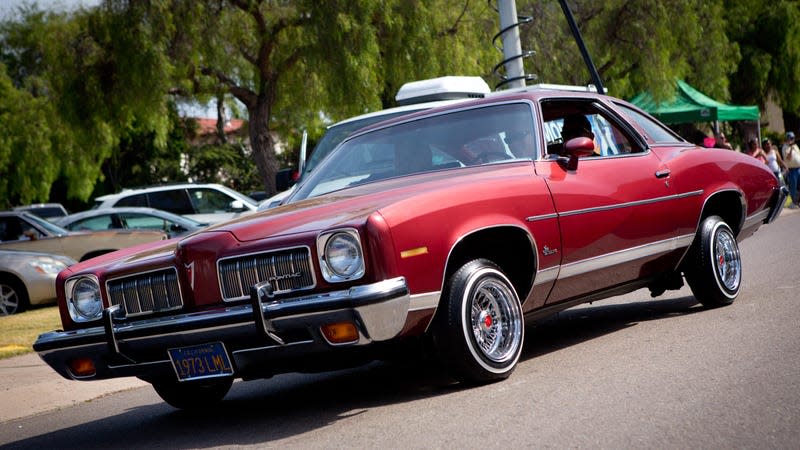California's Lowriders May Rise Once More

You know what they say: You can’t keep a good lowrider down. Since the 1980s cities in California have banned cruising in these iconic vehicles. But these laws are now lifting on the grounds that the bans censure enthusiasts of color specifically and the whole state may allow these low and slow vehicles to rise again.
The classic American cars with hydraulic pumps are iconic in their birthplace of southern California. The Mexican-American community in particular identify the vehicles as part of their heritage; a tradition going all the way back to post-war America. Bans began to pop up in the ’80s however, as city councils began to see the vehicles and slow cruises as opportunities for drug dealing and gang violence.
Read more
One of the cities where the lowrider was first made famous — San Jose — lifted a 36-year-ban on lowriders late last year, as well as a San Diego suburb of National City. Last year, a resolution passed in the California legislature encouraging cities to give up the bans voluntarily.
Even after National City reinstated its ban after the turnout on a 200-car event ended up in the thousands, the community’s assemblyman, David Alvarez, co-authored the state-wide appeal making all remaining city bans null and void, according to The Wall Street Journal in February:
Earlier this month, a bill introduced in the state assembly would repeal remaining bans statewide, by stripping away a 1988 California law that allowed local governments to pass anticruising ordinances. Such ordinances can be applied to cruisers as well as lowered cars.
That bill was co-authored by Assemblyman David Alvarez, who represents the San Diego suburb of National City, where the city lifted a cruising ban last year—and then restored it after unexpectedly large crowds attended a sanctioned event.
“We feel this ordinance is targeting the Black and brown community,” said Jovita Arellano, president of United Lowrider Coalition, a San Diego group formed in 2020 to seek the repeal. The bans don’t target more upscale areas frequented by high-performance cars, she added. “The hot rods don’t get pulled over.”
Police say the bans are needed to rein in unruly crowds while proponents of the bans say they are used to harass drivers of color. But lowriding clubs and groups say the slow meandering rides are a social event, allowing people in the community to mix and mingle and meet up with potential dates. What police call “loitering” is what the actual people involved in the activity call socializing.
Considering cities in California are now dealing with a epidemic of sideshows, where drivers and spectators completely block traffic and perform dangerous stunts, I’d say cities have bigger fish to fry than a few Buick Riveras on hydraulics, but you certainly can’t underestimate the effect these drives have on local communities either. After National City issued only 200 permits to lowriders, allowing them to cruise a long-banned local street, thousands of vehicles descended on the suburb. The ensuing chaos left police unprepared, leading to a dangerous gridlock. The city is now charging $20,000 to hold events, which clubs say are prohibitively expensive.
More from Jalopnik
Sign up for Jalopnik's Newsletter. For the latest news, Facebook, Twitter and Instagram.

 Yahoo Autos
Yahoo Autos 